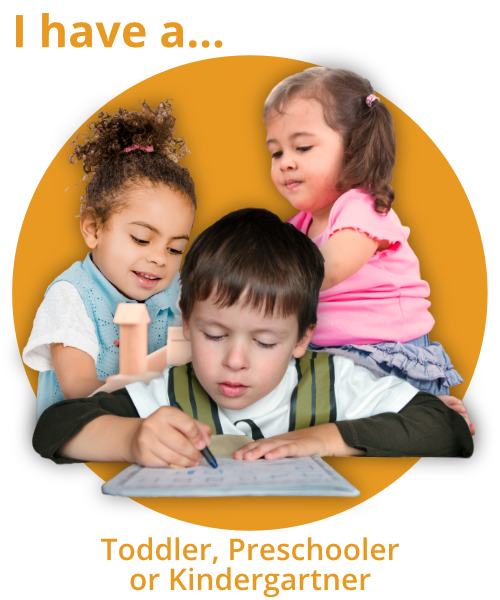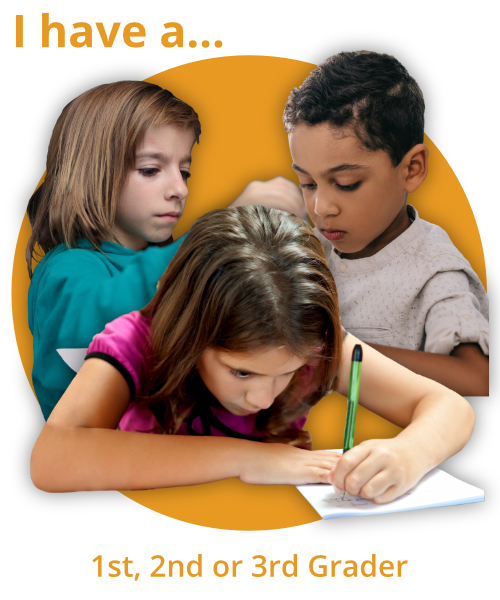Get Out Of Your Child’s Way (So That The Magic Can Happen!)
Let’s start at the beginning: a simple definition.
One, single word can be packed with so much power and meaning.
Magic
/ˈmajik/
noun
the power of apparently influencing the course of events by using mysterious or supernatural forces. "suddenly, as if by magic, the doors start to open"
adjective
1.used in magic or working by magic; having or apparently having supernatural powers. "a magic wand"
2. wonderful; exciting. "what a magic moment"
verb
move, change, or create by or as if by magic "he must have been magicked out of the car at the precise second it exploded"
(Source: Oxford Dictionary)
To me, alllll of these things define so well the magic of childhood, which is: the development that occurs naturally within the child, completely unseen and uncontrolled by us. You can’t look at the muscles and watch them growing… you just wake up one morning and realize it’s happened.
This is true with brain development, too! We cannot know the child has learned something by looking at them. We can’t see them transition from one developmental phase to another.
But we CAN observe it.
We can look for the outside signs of the inner work… we can bear witness to the course of their becoming.
Maria Montessori saw magic happening via the child’s sensitive periods, and she was on target even before neuroscience was a dinnertable topic. The only way the inner needs of a child are filled is by the child going to seek out an activity that fulfills that need. There is not some external sign other than the way the child is engaging with the world around them.
Supporting Your Child’s Natural Development
This is the part where I accuse you of being in your child’s way too often and you feel a little defensive at first, but then over the next few days, you start to become slightly more conscious about your interactions with your child and realize that maybe I was right after all.
Before teaching any skills at all or performing any nurturing tasks for our children (for example, washing their dirty little hands), we need to ask ourselves if we need to step back, stop talking, and let the magic unfold.
Parents do not need to be central to every moment in childhood. I know we want to witness it all, and to experience each amazing moment of growth—but our presence is not always necessary.
In fact, sometimes just by standing too close, we suppress their natural inclination to explore and become independent. Walk the fine line: model and then get out of their way, so their attention is not on you but on their own discoveries. This takes practice! I encourage you to start making small excuses to step back and step away a little bit at a time.
Don’t ignore your children completely. This is not an excuse for negligance—and do spend quality time with them (every day!). But take care that your child is the one actually doing the learning.
Give Your Child Extra Time
If you have ever sat next to an 18 month old who insists on putting on her own shoe, you are beginning to understand the concept of child-time I am referring to.
Give your child more time than you think that she can possibly need. Don’t rush her through her explorations. Unfortunately, rushing children is a cultural norm. Even in most schools, we start with a list of skills and then methodically tick them off, pushing the children from one learning concept to the next. Rarely do we allow them to pause and think about the significance of this skill and discover the next one on their own.
This rushing of childhood is not limited to schools, however. You see that “go go GOOOO!” mentality in sports all the time. We impress our adult concepts of success on our children--in hopes that it will help them become successful.
Think about this the next time you are out in public at a museum or cultural space where they have exhibits for children. In order to make things fair socially/societally, we often wait in lines for children to get to have an experience…and then we are forced to rush them through the experience and sometimes do the work FOR them so that others don’t have to wait as long.
Our need for efficiency is not relevant to children. It’s not always possible, but where you can, be more mindful that what is most needed is time for discovery.
There’s nothing wrong with wanting ease and success for your child. The problem is when we start putting pressure on our children to perform rather than letting them follow their own biological needs and development. Since we cannot see the learning process, we cannot know for sure exactly what is happening, and therefore it is exceptionally important that we do not rush or push them to learn or understand new concepts.
The real magic happens in the space that exists between actions.
Use Magical Materials
The Montessori pink tower is magically iconic for a reason, and that reason is not becuase they stack from bottom to top so easily. The magic is not in the material itself, however —it’s that materials like the ones that Maria Montessori suggested be offered to children allow the child’s magic to reveal itself.
When you give a child a simple plaything, they are the ones that use their brains and their imaginations to solve the problem and understand the concepts the toy is “teaching”.
Can’t afford “proper” Montessori materials? Join the club! Focus on simple toys that allow your child to do the imagining and the work rather than dictating the play for them. Wooden blocks, magnatiles…any simple toy will do, as long as it lets the child do the leading, rather than being led by a talking/singing toy or an adult.
Offer Less Structure and More Flexibility
Pretend play is magical in itself! Allow your child to immerse himself, and don’t feel that it is any less valid or less important than any work on a tray. Free, unstructured play is vital to child development.
If you’re struggling with the Montessori concept of pretend play vs. adult-led fantasy play, I highly recommend you go give a listen to my episode on pretend play.
Get Your Child into Nature
Nature is deeply, deeply magical. The ecosystem on Earth, as it exists today supporting life, is real, wild magic that evolves and grows. Adult humans, plants, animals…we all exist together in a timeline that is not controlled or controllable. Add all the rambunctious, curious human children into that mix and there is automatically more magic!
The unstructured nature of the outdoor environment allows you to hang back and relax into the moment, making it a comfortable, healthy, happy place for children.
Because there’s less stuff to “do” outside, you are naturally more patient. The trees, water, dirt, moss, grass, rain, and other natural elements provide all of the learning opportunities, giving children so much inspiration and space to dance along their own developmental path.
If you’re feeling like things are a little dull inside the playroom, go outside and let the magic unfold itself as you step away. It’s a better learning environment than any classroom could be, and you can quote me on that!


